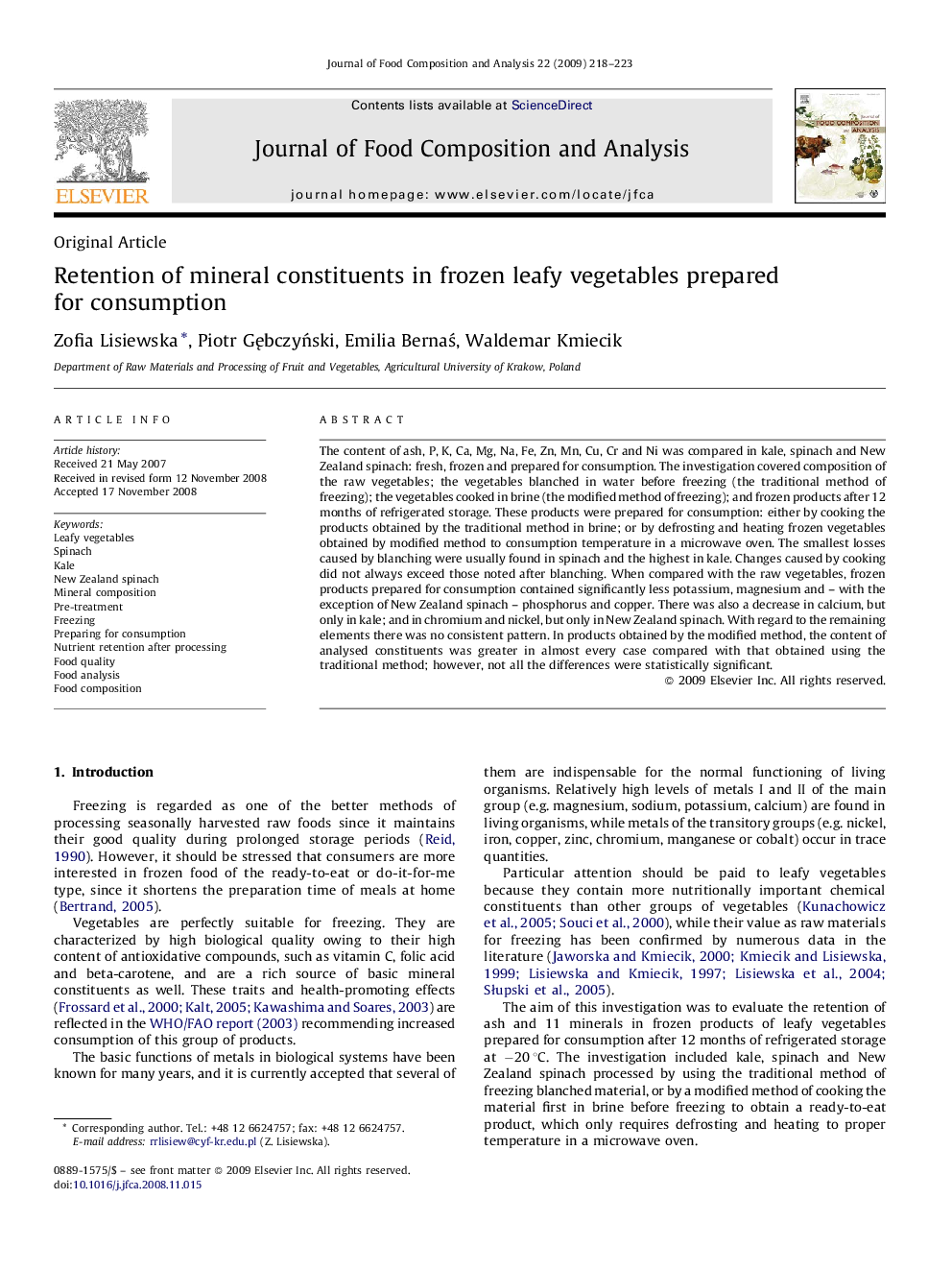| Article ID | Journal | Published Year | Pages | File Type |
|---|---|---|---|---|
| 1218819 | Journal of Food Composition and Analysis | 2009 | 6 Pages |
The content of ash, P, K, Ca, Mg, Na, Fe, Zn, Mn, Cu, Cr and Ni was compared in kale, spinach and New Zealand spinach: fresh, frozen and prepared for consumption. The investigation covered composition of the raw vegetables; the vegetables blanched in water before freezing (the traditional method of freezing); the vegetables cooked in brine (the modified method of freezing); and frozen products after 12 months of refrigerated storage. These products were prepared for consumption: either by cooking the products obtained by the traditional method in brine; or by defrosting and heating frozen vegetables obtained by modified method to consumption temperature in a microwave oven. The smallest losses caused by blanching were usually found in spinach and the highest in kale. Changes caused by cooking did not always exceed those noted after blanching. When compared with the raw vegetables, frozen products prepared for consumption contained significantly less potassium, magnesium and – with the exception of New Zealand spinach – phosphorus and copper. There was also a decrease in calcium, but only in kale; and in chromium and nickel, but only in New Zealand spinach. With regard to the remaining elements there was no consistent pattern. In products obtained by the modified method, the content of analysed constituents was greater in almost every case compared with that obtained using the traditional method; however, not all the differences were statistically significant.
